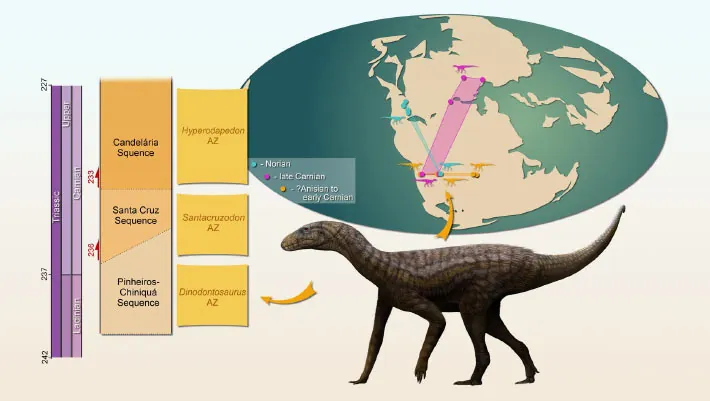
Groundbreaking Discovery: New Dinosaur Relative Unearthed in Brazil!
2024-10-02
Author: Yu
Groundbreaking Discovery: New Dinosaur Relative Unearthed in Brazil!
In an exciting revelation for paleontology, scientists have identified a newly named genus and species of silesaurid, dubbed Gondwanax paraisensis, from fossil remains discovered in Southern Brazil. This breakthrough adds a significant chapter to our understanding of dinosaur evolution.
About Silesauridae
Silesauridae, an extinct family of Triassic reptiles closely related to dinosaurs, showcases a fascinating diversity in their anatomical features and ecological roles. These ancient creatures typically exhibited long necks and legs, likely adopting quadrupedal movement. Silesaurids are often categorized as non-dinosaur dinosauriforms, forming the sister group to the iconic Dinosauria.
Scientific Perspectives
According to Dr. Rodrigo Temp Müller, a leading paleontologist from the Universidade Federal de Santa Maria, there is a consensus among researchers regarding silesaurids being the sister-group to dinosaurs. However, some scientists propose alternative classifications positioning them within the Ornithischia clade, highlighting the ongoing debates in the scientific community about their exact evolutionary relationships.
Evolutionary Significance
Silesaurids roamed the Earth for over 30 million years during the Triassic period, occupying various ecological niches ranging from carnivorous to herbivorous diets. As Dr. Müller notes, understanding their anatomy and evolutionary pathways is essential for piecing together the faunal successions of this crucial period in Earth’s history.
Introducing Gondwanax paraisensis
The newly identified Gondwanax paraisensis thrived during the Middle-Upper Triassic, approximately 237 million years ago, and is one of the oldest known dinosauromorphs from South America, as well as among the oldest silesaurids worldwide. Its skeletal remains were excavated from the Santa Maria Formation in Brazil's Rio Grande do Sul region.
Unique Features of Gondwanax paraisensis
This remarkable species is characterized by having three sacral vertebrae—a trait usually associated with more advanced forms—along with an incipient fourth trochanter of the femur, setting it apart from its contemporaries. Dr. Müller suggests that this unique combination of skeletal features reflects diverse locomotor strategies among early pan-avians.
Significance of the Discovery
Additionally, the discovery of Gondwanax paraisensis alongside Gamatavus antiquus in the same assemblage is significant. This finding marks the earliest evidence of sympatry among silesaurids in South America, indicating potential niche differentiation and varied behavioral adaptations within their ecosystems.
Conclusion
This groundbreaking study, which sheds light on the early evolution of bird-line archosaurs and the functional diversity of silesaurids, was published on September 30, 2024, in the journal Gondwana Research, marking a pivotal moment for our understanding of dinosaur relatives.
Stay tuned for more thrilling updates from the world of paleontology, as researchers continue to unveil the mysteries of our planet's prehistoric past!


 Brasil (PT)
Brasil (PT)
 Canada (EN)
Canada (EN)
 Chile (ES)
Chile (ES)
 España (ES)
España (ES)
 France (FR)
France (FR)
 Hong Kong (EN)
Hong Kong (EN)
 Italia (IT)
Italia (IT)
 日本 (JA)
日本 (JA)
 Magyarország (HU)
Magyarország (HU)
 Norge (NO)
Norge (NO)
 Polska (PL)
Polska (PL)
 Schweiz (DE)
Schweiz (DE)
 Singapore (EN)
Singapore (EN)
 Sverige (SV)
Sverige (SV)
 Suomi (FI)
Suomi (FI)
 Türkiye (TR)
Türkiye (TR)